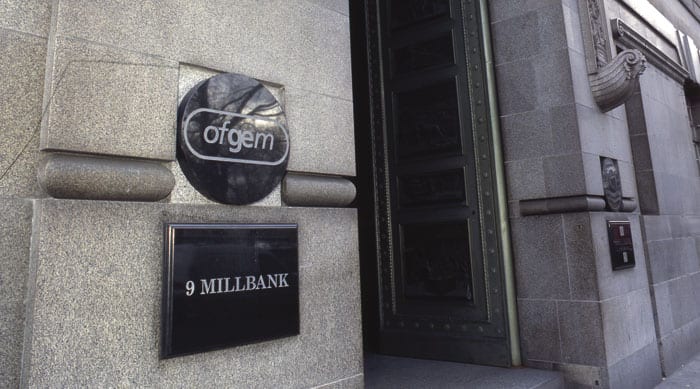Ofgem launches low carbon Action Plan in nine steps
New Ofgem chief executive Jonathan Brearley used his first day in post to publish the regulator's Decarbonisation Action Plan, setting out nine steps the regulator plans to make in the next 18 months to meet the 2050 net-zero challenge.
6th February 2020 by Networks

Brearley, formerly the regulator’s executive director for systems and networks, took up his new post on 3 February, replacing Dermot Nolan after the latter’s six year tenure in the post.
The Action Plan acknowledges that Ofgem has a “pivotal role” in decarbonisation, in a deflection of criticism that the regulator has failed to foreground the low carbon agenda in its policy-making.
Broadly, Ofgem says that its task is to ensure that the costs of renewing networks and adding low carbon generation are shared evenly between the consumers of today and tomorrow.
It warns that “there will be additional costs in the short term as our energy decarbonises” but says that “not acting today will result in much higher costs in the future”.
The plan looks ahead to the need to adapt the grid to electric vehicles, while also supporting a fourfold increase in offshore wind generation.
The nine actions points are:
Designing cost effective networks for net zero: this will mean making RIIO-2 more “adaptive”, and introducing a new “reopener” contract mechanism for the gas and electricity networks to balance the need for investor confidence and the need to respond flexibly to changing technological and policy developments. A “reopener” is a clause in an agreement that means that it can be reopened priory to its expiration date if other factors change.
Long-term planning and innovation: Ofgem will set up a new strategic innovation fund focussed on the challenge of decarbonisation.
More effective coordination to deliver low cost offshore networks: Ofgem will explore opportunities to coordinate the connection of offshore windfarms and interconnectors to the power grid with the aim of reducing costs.
Preparing for low-carbon heat: Ofgem will support government and industry to ensure that there is a fair balance of costs in preparing for heat decarbonisation. It will also work with the Health and Safety Executive to review the Iron Mains Risk Reduction Programme (this measure appears to respond to a criticism recently raised by the National Audit Office).
Preparing system operators for a net zero future: there will be a strategic review of the roles and responsibilities in the energy system, including that of the Energy System Operator, to ensure that they are fit for a low carbon future.
Supporting flexibility: The regulator will promote flexibility by ensuring that it is adequately rewarded, including through reforms to access, charging and half-hourly settlement, and its work to encourage networks to tender for flexibility services.
Enabling electric vehicles at low cost: Ofgem will develop a regulatory strategy for electric vehicles to maximise the consumer benefit and to tackle regulatory barriers.
Opening up retail innovation: The plan is to enable innovation and experimentation, by adapting regulatory requirements and supporting open access to suitable energy data, including across market sectors.
Adapting the organisation: The regulator is pledging to become more “adaptive” in it’s the regulatory approaches as it take decisions in the face of uncertainty. It will also set up a Net Zero Advisory Group to enable Ofgem to keep in step with policy and other developments.
The action plan also includes additional details on future policy direction, setting out Ofgem’s plan to ensure that energy consumers are offered “low-hassle” ways to participate in energy flexibility services, and are rewarded for doing so.
Discussing the replacement for the Renewable Heat Incentive, it warns that there will need to be “careful consideration” of the design of any subsidy schemes, as these can be a poor policy lever.
“Since early adopters are often wealthier, this can effectively lead to transfers from poorer to richer consumers,” the report says.
The Action Plan includes little information on the ongoing transition that will see today’s Distribution Network Operators become Distribution System Operators.
However, the “Glossary of terms” section contains this definition: “We consider Distribution System Operation (DSO) to be a set of functions and services that need to happen to run a smart electricity distribution network. This does not focus on a single party as an operator, but recognises roles for a range of parties to deliver DSO.”
According to independent energy consultant John Scott, this represents a change in emphasis, amounting to a statement that “DSOs” will involve roles for a range of parties.
“Perhaps it’s the other side of the same coin, but saying here that DSO ‘does not focus on a single party as operator’ could be interpreted as significantly diluting the new opportunities for the DNOs,” he commented.
Comments
Login on register to comment
Related content

Gas
Cadent backs launch of major bio-CNG HGV refuelling station
Gas network’s £250,000 infrastructure investment ensures supplies to existing connected customers have not been impacted

Gas
Editor’s blog: The biggest tests of resilience are yet to come
Network content director Jane Gray reflects on the industry's coronavirus response to date and the challenges still to come.

Gas
From the front line: Chris Garside and Andy Simcoe, Northern Gas Networks
Key workers across the power and gas networks are playing a critical role in the national response to Coronavirus. Network has committed to profiling their stories.
Related supplier content

Power
Load patterns and lockdown: how Covid-19 is impacting electricity networks
Insights into dynamics on the low voltage network as the outbreak unfolds

Heat
How E.ON. is helping the City of London become a zero emissions city
Discover Citigen. Deep in the heart of our bustling capital

Power
The Innovation Factor: Managing the transition to smart communication technologies in the electricity distribution sector white paper
The transition from legacy communications systems to new technologies can seem daunting for organisations in the electricity sector. But with market dynamics changing rapidly